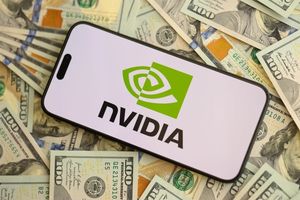
Concerns are escalating across financial markets regarding potentially overheated valuations in the technology sector, particularly within the burgeoning field of Artificial Intelligence. As of November 2025, a growing chorus of experts, including prominent figures from major financial institutions, is drawing stark parallels to historical speculative bubbles, warning that the current exuberance in AI-related stocks could portend a significant market correction. The rapid ascent of companies leading the AI charge, often accompanied by extreme valuation metrics disconnected from traditional financial fundamentals, has ignited a debate about the sustainability of these gains and the potential for widespread market instability should the bubble burst.
The current environment is characterized by a fervent investor appetite for anything AI-related, driving stock prices to unprecedented levels. While the transformative potential of AI is undeniable, the speed and scale of capital flowing into the sector have raised red flags. This speculative fervor, coupled with a concentration of investment in a handful of dominant tech giants, is creating an increasingly fragile market landscape, prompting urgent discussions about what this means for investors and the broader economy in the coming months and years.
Unpacking the AI Valuation Frenzy: A Closer Look at the Data
The alarm bells ringing across Wall Street are not without significant empirical backing. Several key indicators point to potentially unsustainable valuations within the AI sector. For instance, companies like Palantir Technologies (NYSE: PLTR), a data analytics firm with significant AI applications, have reportedly traded at astronomical price-to-earnings (P/E) ratios, with some analysts citing multiples as high as 700x earnings. Such figures imply an investor would need centuries to recoup their initial investment at current profit levels, a stark contrast to typical P/E ratios of 15-20 for stable, mature industries.
Perhaps the most striking example of this valuation surge is Nvidia (NASDAQ: NVDA), the semiconductor giant at the heart of the AI revolution, which reached a historic $5 trillion valuation in November 2025. While Nvidia’s role in providing essential AI infrastructure is critical, its valuation trajectory has fueled discussions about whether its growth potential is already fully priced in, or even over-priced. The concern extends beyond individual companies; analysts observe a notable disparity between the valuations of many AI firms and their traditional financial fundamentals, with some leading AI platforms exhibiting revenue-loss ratios exceeding 300% and a heavy reliance on speculative future growth projections rather than current profitability. This speculative wave has been building over the past year, intensifying as AI breakthroughs become more frequent and the mainstream adoption of AI applications accelerates.
The market's enthusiasm is further concentrated within a select group of companies, often dubbed the "Magnificent Seven"—Amazon (NASDAQ: AMZN), Alphabet (NASDAQ: GOOGL), Meta (NASDAQ: META), Apple (NASDAQ: AAPL), Microsoft (NASDAQ: MSFT), Nvidia (NASDAQ: NVDA), and Tesla (NASDAQ: TSLA). This concentration of investment capital means that if these dominant players experience rapid corrections, the ripple effects could be severe, triggering cascade effects across the broader market. Experts also point to concerns about circular financing structures, where AI companies invest in each other's services, potentially creating artificial revenue streams that do not reflect genuine market demand. Financial analysts at Deutsche Bank have characterized current AI investment levels as fundamentally unsustainable, noting a mismatch between capital requirements and realistic revenue generation timelines. They suggest the industry would need to generate an astounding $2 trillion in annual revenue by 2030 to justify existing spending levels, a massive growth challenge given current revenues.
Navigating the AI Landscape: Potential Winners and Losers
In an environment marked by such elevated valuations, the distinction between genuine innovation and speculative froth becomes critical for public companies. Those with robust fundamentals, diversified revenue streams, and a clear path to profitability from their AI investments are better positioned to weather a potential downturn or to continue sustainable growth. Companies like Microsoft (NASDAQ: MSFT) and Alphabet (NASDAQ: GOOGL), with their vast ecosystems, strong balance sheets, and strategic AI integrations across multiple products and services, may be more resilient. Their ability to leverage AI to enhance existing offerings and create new markets, rather than solely relying on speculative future AI-specific revenue, provides a buffer. Similarly, Nvidia (NASDAQ: NVDA), despite its high valuation, holds a near-monopoly on the high-performance GPUs essential for AI training and inference, giving it a strong competitive moat, assuming demand for its chips remains robust and competition doesn't rapidly erode its market share.
Conversely, companies whose valuations are primarily driven by AI "hype" without corresponding proven business models or significant current profitability stand to lose the most. Smaller, pure-play AI startups that have yet to demonstrate scalable revenue generation, or established companies that have seen their stock prices surge purely on the promise of future AI integration, could face significant corrections. Palantir Technologies (NYSE: PLTR), despite its impressive technology, faces scrutiny over its high P/E ratio and the long-term sustainability of its current growth trajectory if market sentiment shifts. The "Magnificent Seven," while powerful, also represent a concentration risk; a significant correction in any one of these giants due to AI valuation concerns could have a disproportionate impact on their share prices and, by extension, on broader market indices heavily weighted by these stocks. Investors in these high-flying, high-multiple AI stocks could see substantial capital erosion if a market correction materializes, particularly if higher interest rates continue to make future earnings less valuable and encourage a flight to value over growth.
Broader Implications: A Shadow of the Dot-Com Era?
The current fervor around AI-related stocks is not merely an isolated market phenomenon; it carries wider significance for the global financial system and the broader technology landscape. This event fits squarely into the ongoing narrative of technological disruption, where groundbreaking innovations like AI promise to reshape industries, but also bring with them periods of intense speculative investment. The potential ripple effects on competitors and partners are substantial. If leading AI companies face valuation corrections, it could cool investment across the entire AI ecosystem, impacting startups, venture capital funding, and even the pace of AI development itself. Smaller players relying on funding from larger tech companies or venture capital could find access to capital constrained.
The comparisons to the late 1990s dot-com bubble are becoming increasingly frequent and pointed. Experts like Torsten Sløk of Apollo Global Management find an "uncanny resemblance" between the current AI investment cycle and the internet bubble, warning that the top 10 companies in the S&P 500 today are "more overvalued than they were in the 1990s," potentially leading to a market crash worse than the dot-com bust. Microsoft (NASDAQ: MSFT) CEO Satya Nadella and billionaire investor Ray Dalio have also echoed these sentiments. Brent Goldfarb, co-author of Bubbles and Crashes, notes that the AI boom "ticks every box" for a technology-driven bubble, including uncertainty over end-use, focus on "pure play" companies, novice investor participation, and reliance on narrative over fundamentals. Regulatory bodies, including the Bank of England's Financial Policy Committee and the IMF, have identified market concentration and potential systemic threats within the AI investment environment as key risk factors, suggesting that increased scrutiny or policy implications might emerge if market stability is threatened. Unlike many dot-com companies that lacked profitability, some major AI players today, such as Nvidia (NASDAQ: NVDA) and AMD (NASDAQ: AMD), are highly profitable, offering a nuanced perspective that suggests a correction might be less catastrophic than the 2000 crash.
What Comes Next: Navigating Uncertainty
The path forward for AI-related stocks and the broader market is fraught with both opportunities and challenges. In the short term, many experts, including Goldman Sachs CEO David Solomon and DBS CEO Tan Su Shan, are predicting a 10-20% market correction within the next 12 to 24 months, encompassing both AI-specific valuations and broader market conditions. Such a pullback could serve as a "healthy reset," cooling overheated valuations and creating a more sustainable foundation for future growth. However, a more severe scenario, akin to a bubble burst, remains a distinct possibility if speculative excesses continue unchecked and investor confidence rapidly erodes.
In the long term, the underlying technological revolution of AI is expected to continue its trajectory, regardless of short-term market fluctuations. This means that companies with genuine innovation, strong intellectual property, and effective monetization strategies for their AI capabilities will likely thrive. Strategic pivots and adaptations will be crucial for companies caught in the valuation crosshairs; those that can demonstrate tangible returns on their AI investments and transition from speculative growth to sustainable profitability will emerge stronger. Market opportunities may arise for astute investors during a correction, allowing them to acquire high-quality AI assets at more reasonable valuations. Challenges include the significant environmental and operational costs associated with large-scale AI infrastructure, such as energy and water consumption, which could impact profitability. Different scenarios could unfold: a "soft landing" where valuations gradually normalize, a "healthy correction" that purges speculative excesses, or a more severe "bubble burst" if market sentiment turns sharply negative. The outcome will largely depend on the interplay of corporate execution, macroeconomic factors, and investor psychology.
A Crucial Juncture for the Market
In summary, the current concerns surrounding overheated tech valuations, particularly within the AI sector, represent a critical juncture for financial markets. The rapid ascent of AI-related stocks, driven by intense speculative interest and often disconnected from traditional financial fundamentals, has created an environment reminiscent of past market bubbles. Expert opinions are largely cautious, with many drawing parallels to the dot-com era and predicting significant market corrections in the near future. While the transformative power of AI is undeniable and will continue to drive innovation, the sustainability of current valuation levels is highly questionable.
Moving forward, the market will likely differentiate between genuine AI innovators with strong business models and those whose valuations are built on pure speculation. Investors should closely watch for signs of a market correction, which could manifest as a gradual decline or a more abrupt sell-off. Key indicators to monitor include corporate earnings reports, especially the profitability and cash flow generated from AI initiatives, as well as macroeconomic factors such as interest rate changes and inflation. The actions of regulatory bodies in response to market stability concerns will also be important. Ultimately, while AI promises to reshape the world, investors must exercise caution and prioritize fundamental analysis over speculative hype to navigate what could be a volatile period for the tech sector and the broader market in the coming months.
This content is intended for informational purposes only and is not financial advice





